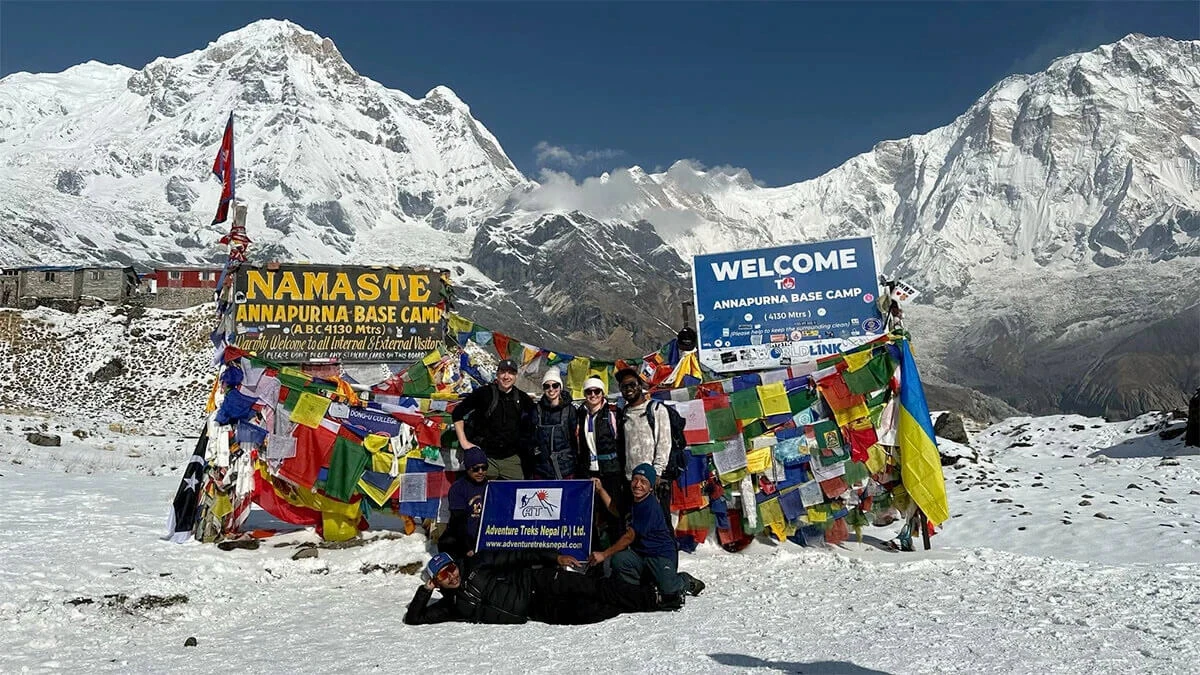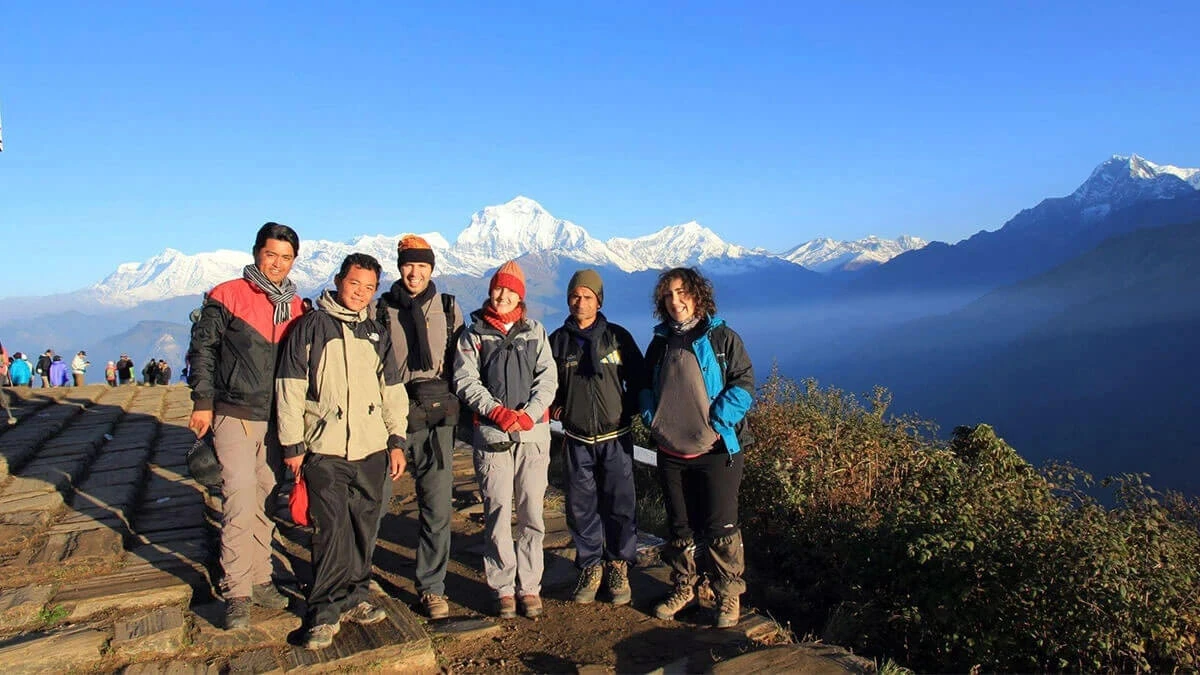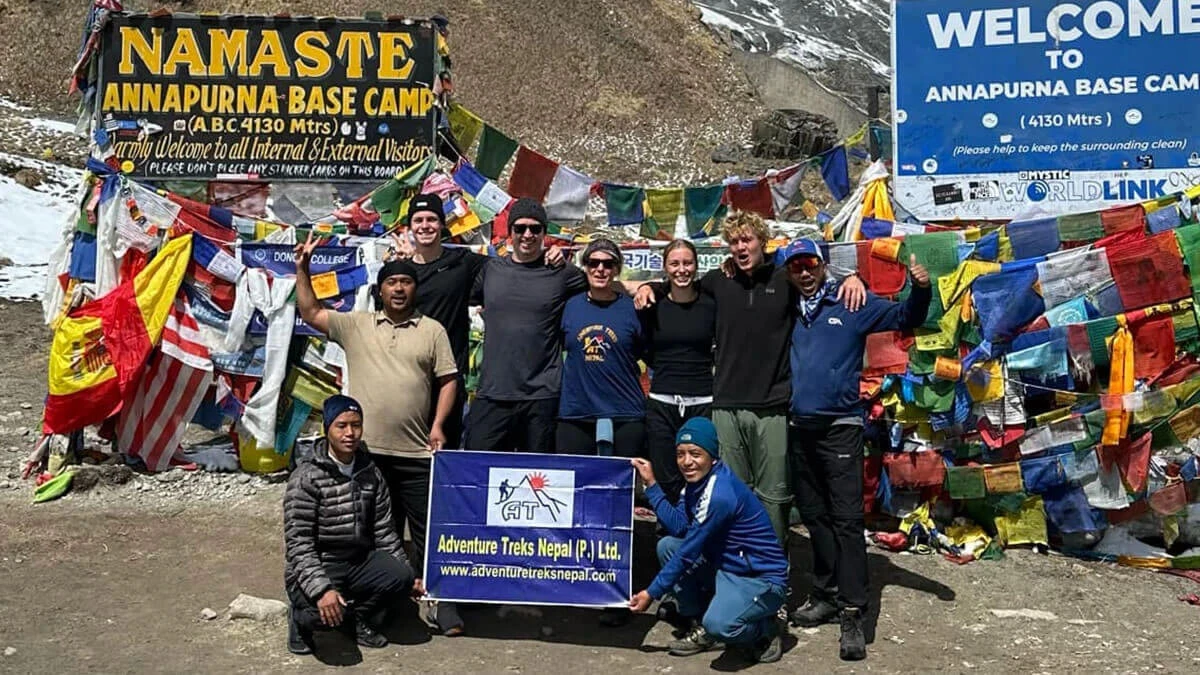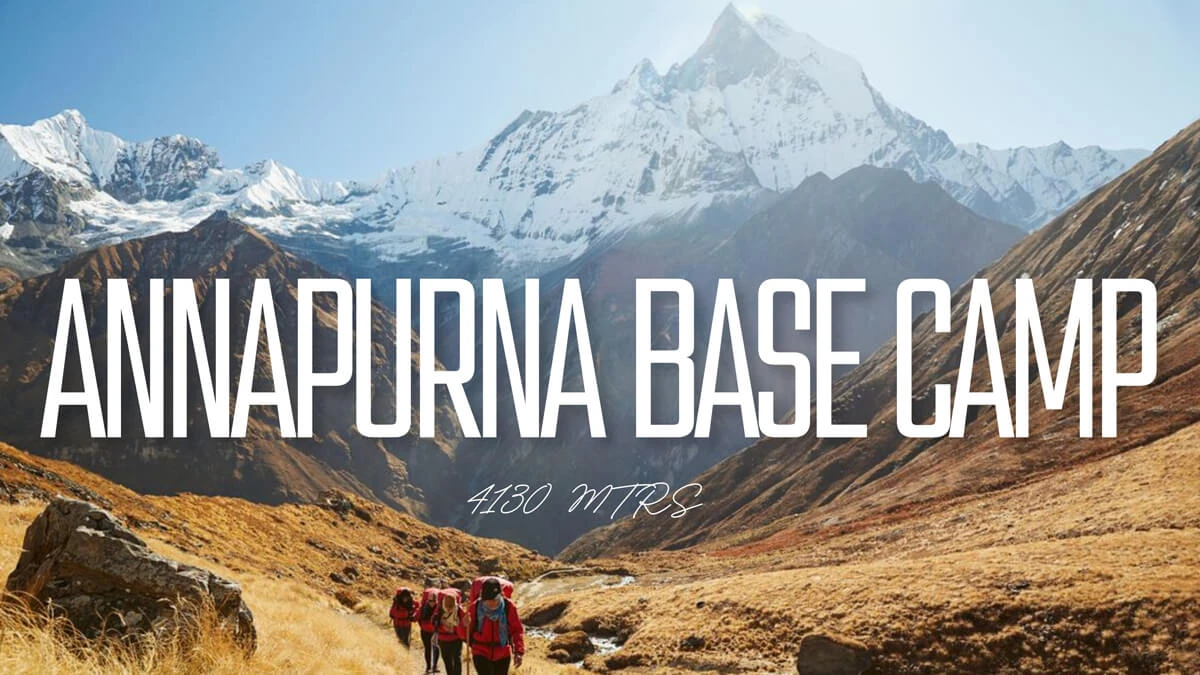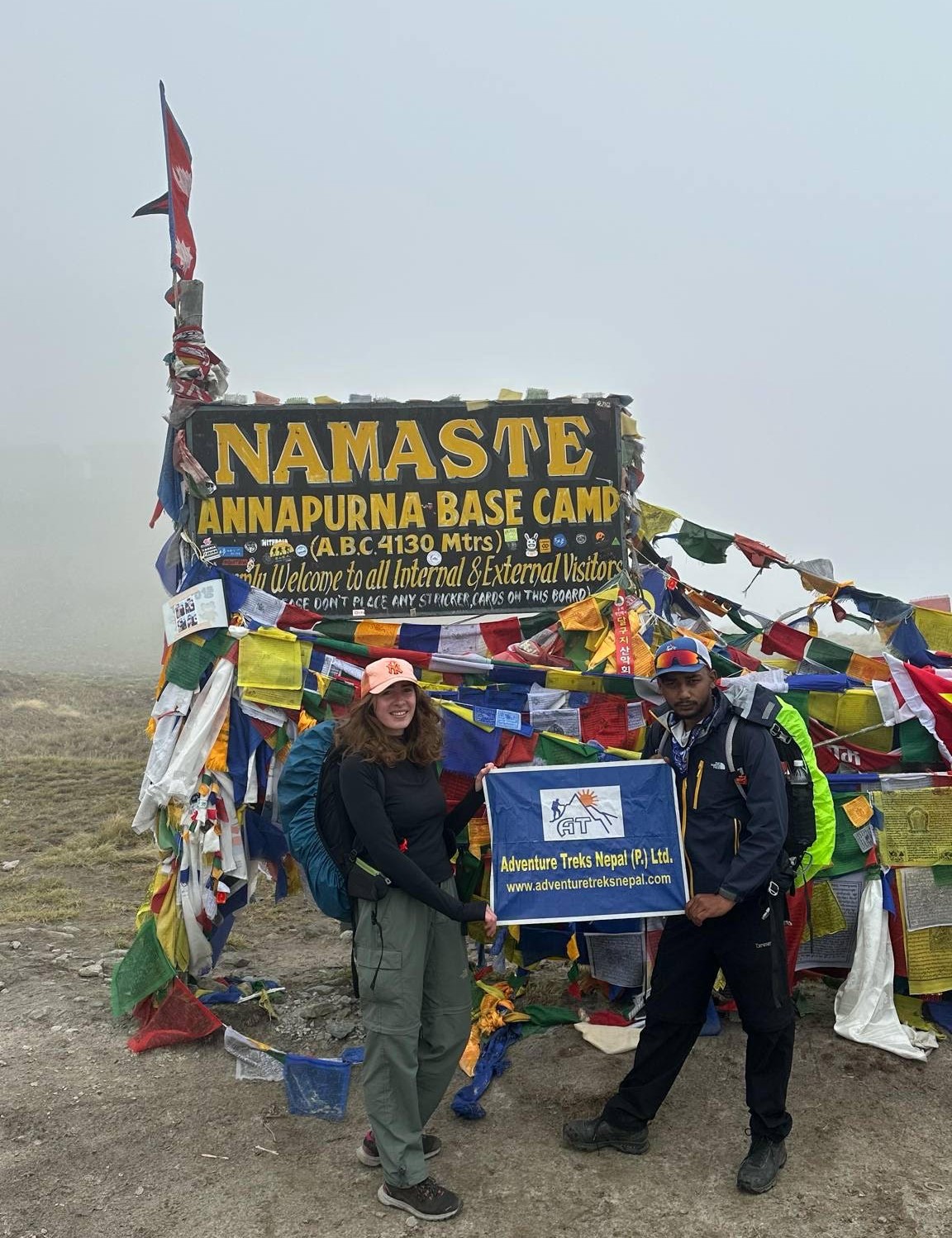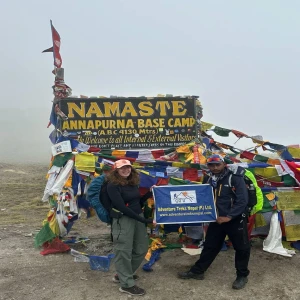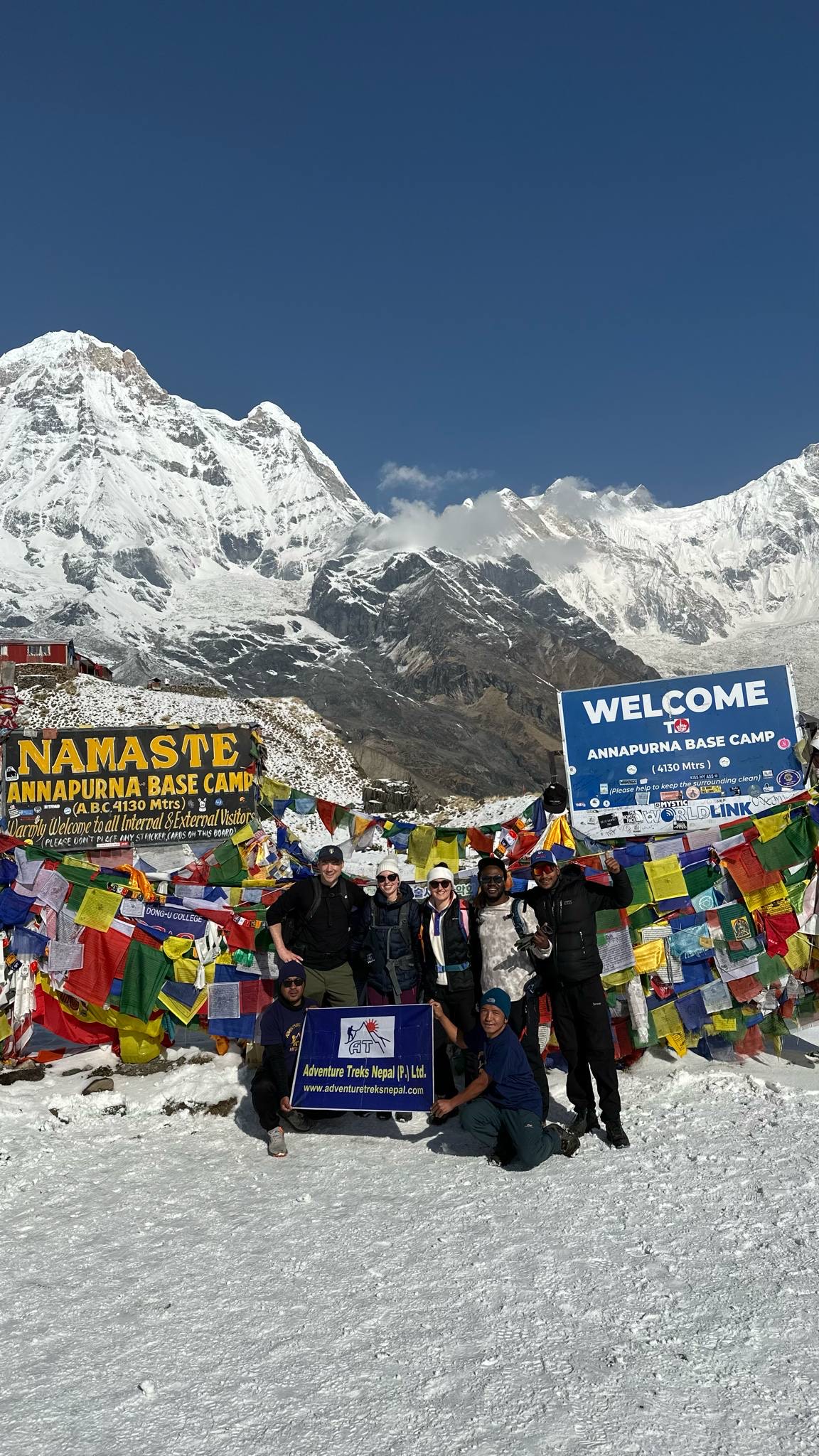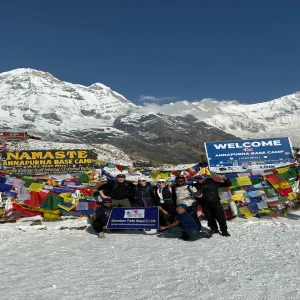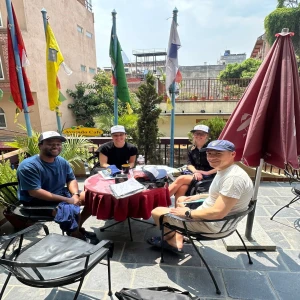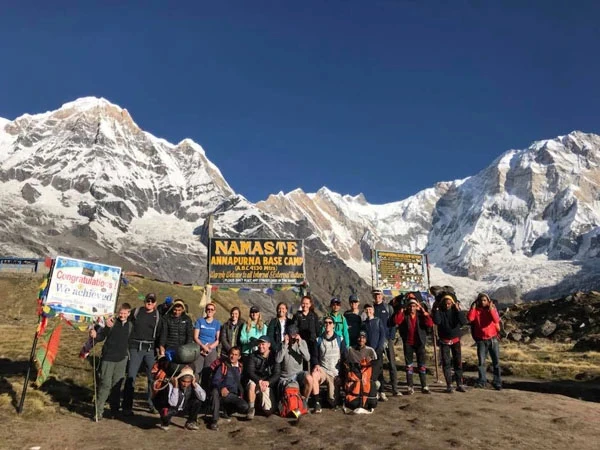Highlights
- A golden opportunity to discover the dynamic cities of Pokhara and Kathmandu, which are popular for their rich cultures and natural wonders.
- Reach the base of Mt. Annapurna (8,091 m), at an elevation of 4,130 m, to savor the beauty of the mountain ranges, valleys, and glaciers.
- Explore the distinct cultures of the Gurung and Magar communities in the Himalayas, accompanied by their warm hospitality and traditional Nepalese cuisine.
- A wonderful sunrise view over the Himalayas, including Dhaulagiri and Annapurna, from Ghorepani Poon Hill (3,210 m).
- Close vistas of snow-covered mountains, including Machhapuchhre, Annapurna I, Annapurna South, Hiunchuli, Nilgiri, and Dhaulagiri, from various vantage points.
- Chance to capture the wonderful scenery of a serene environment, full of blooming rhododendrons, and surrounded by cliffs and towering peaks.
- Experience taking a bath in a natural hot spring in Jhinu Danda, which helps you heal an aching body at the end of the trek.
- Spot endangered wildlife (animals and birds) and vegetation, including leopards, langur monkeys, Himalayan Tahr, blue sheep, lophophorus, eagle, rhododendrons, oaks, and birches.
The 14 days Annapurna Base Camp Trekking in the heart of the Annapurna region, a mid-western trekking destination in Nepal, is one of the best-known Himalayan trekking paths. Trekkers, regardless of fitness level and age, prefer this odyssey to the foothills of Mt. Annapurna (8091 m) because the path is less strenuous than the similar Everest Base Camp Trekking trail.
With a seasoned guide’s lead based on the expert-crafted itinerary for 2025/2026, reach the Annapurna Base Camp at an elevation of 4,130 m, traversing beautiful Gurung and Magar villages, and following the footprints of legendary mountaineers to have a sense of achievement. While natural grandeur flourishes with its charm, the authentic Himalayan cultures of locals residing along the Annapurna trails transport you to a bygone era.
The ancient monasteries, gompas, mani walls, sculptures, architecture, and lifestyle of rural villagers showcase the rich tapestry of cultural treasures in mountainous landmarks, where each aspect blends harmoniously. Delightful locals not only welcome you traditionally, but they also help you in need, making it easier for you to communicate with them.
Good hospitality and serving fresh meals at lodges and teahouses are also factors that make hiking around the Annapurna Mountain Range remarkable, with the guarantee of safety and health. As Adventure Treks Nepal has already conducted hiking to the Annapurna Base Camp, including seniors over 70 years old and small children, you can have fun to the fullest with your loved one during the trek with gradual ascents according to the Annapurna Base Camp Trekking itinerary.
This journey across diverse topography to the Annapurna Base Camp also offers glimpses of a wide range of endangered animals in their natural habitats, filled with rhododendron forests and other vegetation, as the trekking covers the Annapurna Conservation Area. A novice hiker to an experienced one absolutely prefers this 14-day trip because of its rewards, such as the Poon Hill sunrise and natural hot springs at Jhinu Danda.
Nevertheless, if you want unique encounters without more physical strains and other potential challenges, the Annapurna trail awaits you to discover it. Remember us to make your dream trek successful since we at Adventure Treks Nepal are here to serve you at an affordable cost with a customizable itinerary, prioritizing your preferences. For any queries, please contact us, and we will respond promptly.
Why Does the 14 days Annapurna Base Camp Trekking Stand Out in Nepal?
Leaving the tourist hub Pokhara after the vibrant capital city, each step of the Annapurna Base Camp Trekking route will astonish you with unparalleled features. Starting the hike from Nayapul, a small settlement nestled about 22 kilometers southeast of Pokhara, you can make your way towards the Base Camp. While crossing the trails alongside numerous villages, you will gain knowledge that stays with you.
Thanks to nature, hikers savor its unspoiled beauty, showcasing awe-inspiring scenes amidst majestic Himalayan ranges and giant hills. Since Adventure Treks Nepal conducts unique Himalayan adventures in captivating trekking areas across Nepal, we offer this package to help you make your vacation memorable. To get more clarification about how the Annapurna Base Camp Trekking 14 days can be a wonderful escape, check the following:
Which Mountains Make the Annapurna Base Camp Trek 2025/2026 Unforgettable?
Trekking to the home of Mt. Annapurna (8091 m), the tenth-highest mountain on our planet, is a dream of every adventurer. While enjoying jaw-dropping sights from various vantage spots, including Ghore Pani Poon Hill, you find the terrain more mindblowing as you ascend to the higher points. When you finally reach the Annapurna Base Camp at 4130 m, the highest point of the journey, take a deep breath in a cooler atmosphere for a successful climb.
Fluttering prayer flags welcome you there to spend a quality moment observing snow-clad mountains such as Machhapuchhre, Annapurna South, Gangapurna, Himalchuli, Tent Peak, and Hiuchuli. A night under the crystal-clear blanket of stars at the base camp will be more worthwhile than the stops at lower elevations due to both challenges and rewards.
What Cultural Insights Await You on the route to Annapurna Base Camp?
Leaving the vibrant city of Kathmandu, which represents ancient Nepal’s cultures, especially those of the local Newars, you head to the core of the Annapurna region to immerse yourself in the firsthand cultures of Nepal’s ethnic groups, such as the Magar, Gurung, and Thakali. At teahouses run by locals along the trails, they welcome you warmly with a smiley face.
Ancient monasteries, adorned with mani walls, prayer flags, and prayer wheels, showcase Tibetan Buddhism, kept alive for ages through generational transfer. Locals invite you to try their traditional attire, “Gunyo, Patuki, Choli and Ghalek” (women’s custom) and “Topi, Kachhad/Suruwal, Patuki, and Bhoto”(men) at the museum or homestays.
Can you see rare animals on the Annapurna Base Camp Trekking?
The 14 days Annapurna Base Camp trekking is not only about cultural immersion and physical endurance, as it takes you through the Annapurna Conservation Area, which covers districts such as Kaski, Manang, Myagdi, Lamjung, and Mustang. Enjoying rich biodiversity, ranging from lush subtropical forests to alpine meadows, catch glimpses of rare animals, including langur monkeys, Himalayan Tahr, snow leopards, and blue sheep.
Since the conservation Area, decorated with oaks, birches, and rhododendrons, is also a haven for numerous butterflies and birds, nature lovers can have fun by watching them through binoculars. Whether you are a novice or a professional photographer, our guide helps you capture actions of such behaviors on your camera’s roll.
Who Can Join the Annapurna Base Camp Trek 2025/2026?
Each individual has different perspectives on the difficulty level of the route to the Annapurna Base Camp. Nevertheless, this trip can accommodate younger to older family members, as the highest elevation you reach is only 4,130 m (13,550 ft.). Precautions are essential, as hikers may experience symptoms of high-altitude sickness, such as dizziness, due to the lower level of oxygen above 2500 m.
The schedule for the 2026/2027 Annapurna Base Camp trek can be one of the best options for all hikers because it covers a comfortably structured trekking path in Nepal. The itinerary allows you to walk gradually at your own pace while the trekking distance per day is made appropriate, ensuring each day’s trek is not overly taxing.
As you will be able to adjust to the environment with the flow of your steps, Adventure Treks Nepal has not included a whole day for acclimatization. However, mental and physical preparation. If you want to embark on this 14 days Annapurna Base Camp trekking based on your preferences, adding some resting days, we can customize it.
Accordingly, lace your boots up for a 14-day exhilarating odyssey in the Annapurna region with our team to make it enjoyable and smooth.
What is the total trekking distance of the ABC Trek 14 days?
While including a road ride from Kathmandu to the initial point of the route to Annapurna Base Camp and back to Kathmandu, the total travel distance is 586 kilometers. Before reaching Nayapul to begin the hike, you will drive 200 km to Pokhara city within 6-7 hours. Enjoy each step on the trekking route with your fellow trekkers, covering approximately 89 kilometers. Due to easy access to the origin, the trek is not as long as the longer version, the Annapurna Circuit Trek.
Nevertheless, unpredictable weather and other factors that impact the trekking may sometimes extend or minimize the Annapurna Base Camp trekking distance and duration. As the Annapurna trails are well-marked, the average hiking distance is almost 10 kilometers. For more clarity, we have listed below the hiking distance and duration for each day.
- Nayapul to Ulleri: 10.8 kilometers/6-7 hours
- Ulleri to Ghorepani: 10.3 kilometers/4-5 hours
- Ghorepani to Chule: 13.9 kilometers/6-7 hours
- Chule to Chhomrong: 11 kilometers/5 hours
- Chhomrong to Deurali: 12 kilometers/6-7 hours
- Deurali to Annapurna Base Camp:8 kilometers/6 hours
- Annapurna Base Camp to Bamboo/Sinuwaa: 13 kilometers/8-9 hours
- Bamboo/Sinwa to Jhinu Danda: 8 kilometers/5-6 hours
- Jhinu Danda to Samrung: 1.5 to 2 kilometers/1 hour-1.5 hours
How much does the Annapurna Base Camp Trekking Cost?
Various factors, including the chosen itinerary, route, season, accommodation, food, facilities, a guide, porter service, hiking distance, and duration of the trek, influence the Annapurna Base Camp Trekking Cost. Since a hiker can easily reach the starting point by a 4WD, avoiding a domestic flight, the total expense might be lower.
Except for international airfare, travel insurance, Nepal entry visa, extra food and dessert, meals in cities, and tips for a porter and driver, sleeping bags, and a down jacket, Adventure Treks Nepal’s cost for the 14-day ABC trek covers others, including trekking permits and other logistics. The cost of the trek may be higher during the peak seasons (spring and autumn) than off-seasons, as demand for guides, porters, food, and teahouses significantly increases.
As a result, prebooking is necessary for these months to ensure your logistics. Respect locals’ hard work when you find the prices slightly higher than the normal cost in some rural areas. Check the inclusions below in the Cost Details section for this Annapurna Base Camp Trekking package to avoid unexpected expenses along the route and plan your trip strategically.
Smooth itinerary: How Does a Day Unfold on the Annapurna Base Camp Trail?
The package for a 14-day Annapurna trekking trip is activated when our representative from Adventure Treks Nepal picks you up from Tribhuvan International Airport to transfer you to the hotel for an overnight stay. The next day, a thrilling road ride on the Prithvi Highway, crossing Dhading, Mugling, Dumre, Damauli, and Khairenitar, takes you to the mesmerizing city of Pokhara. Enjoy the evening at Lakeside with the views of Machhapuchhre on Phewa Lake and taste various food items at restaurants before heading to the higher terrain to adjust to the common teahouses and food.
After a drive to Nayapul, traverse settlements such as Birethanti and Tikhedhunga, as well as suspension bridges, to reach Ulleri. As each day begins with a hearty breakfast, make your way towards Ghorepani (2020 m), crossing settlements like Nangethati and Banthati alongside dense rhododendron forests. By gaining 400 m elevation, go on a side hike to Poon Hill (3210 m), a picturesque viewpoint for the scene of majestic peaks and sunrises over them.
Clicking the photographs in the background of golden-hued mountains and the first rays of sunlight illuminating peaks, the 14 days Annapurna Base Camp Trekking itinerary instructs you to get back to the teahouse for breakfast before leaving Ghorepani for Chule. Ascending trails take you to Thabala Hill in the first phase of the hike, and the downhill paths begin from here to reach Deurali. After climbing up to Tadapani, take the left trail for Chule for overnight stays. On the 6th day, leaving Chule, you will pass by villages such as Chhomrong and Deurali before climbing up to the Annapurna Base Camp, the most awaited destination of the trek.
Although the Annapurna Base Camp trail is relatively easier than the Everst Base Camp, standing at the Annapurna’s foothills will give you equally awe-inspiring scenery. After spending a night at the base camp, you will get back to Bamboo, retracing the same trail that you used to reach the base of Mt. Annapurna. However, the journey will be more comfortable as the trails are mostly downhill. If you have enough time after reaching Bamboo, proceed ahead to Sinuwa for an overnight stay.
When you are almost near the conclusion of official trekking in the Annapurna region, the trail introduces you to a marvelous spot called Jhinu Danda, which is popular for its natural hot springs, soothing atmosphere, and natural charm. Taking baths in hot springs heals the pains in your body and legs caused by prolonged walks through paths with steep ascents and descents. After a hearty breakfast, make your way towards Samrung, descending to the river, and cross a long suspension bridge before climbing up for a road ride.
From here, an electrifying drive alongside the Modi Khola River will take you to Pokhara within 3 to 4 hours. During the leisure period in the evening, you can either take a rest or explore around the city for more knowledge. Depending on the Annapurna Base Camp Trekking itinerary, drive back to Kathmandu on the 12th day of the trek, following the Trishuli River alongside the traditional settlements, dense forests, and vibrant markets. The next day, you have a whole leisure day; you can either visit the historical places of the Kathmandu Valley and nearby tourist spots or take rest to heal pains.
Finally, the trip is over on the 14th day when our representative from Adventure Treks Nepal will drop you off at the airport for your flight to get back to your homeland. This itinerary of 14 days allows you to continue the hike without much more physical strain. Accordingly, it can be an iconic schedule for you if you want to delve into the Annapurna’s serenity. However, the itinerary is customizable, and you can either shorten or extend the trip based on your vacation or choice. Nevertheless, for those trekkers with a few-days vacation and prefer more budget-friendly ABC trek, we have a 8-day Annapurna Base Camp Trekking from Pokhara.
Why do the 14 days Annapurna Base Camp Trek with us?
Amidst numerous trekking and travel companies in Nepal, Adventure Treks Nepal has become one of the top-rated ones, boasting over 30 years of experience in organizing Annapurna Base Camp trekking. Experienced members of a team, who are well-known to local landmarks and communities, will help you accomplish the trip in the Annapurna region stress-free. A licensed guide with sufficient training handles all the situations, including altitude-sickness-related issues.
Choosing us means making your Himalayan journey incredible at an affordable cost. There is no complex booking process to join our 14-day Annapurna Base Camp Trekking. You can contact us or click the button "Book this trip" on the right of the web page and proceed with the process as instructed. Bookings are open for 2026 and 2027. Contact us without hesitation for more inquiries, as we will respond instantly.
